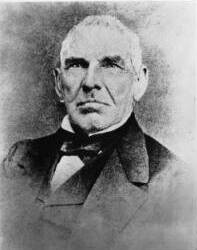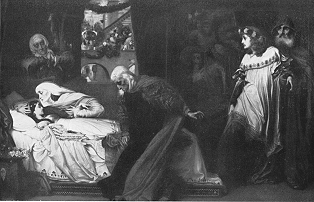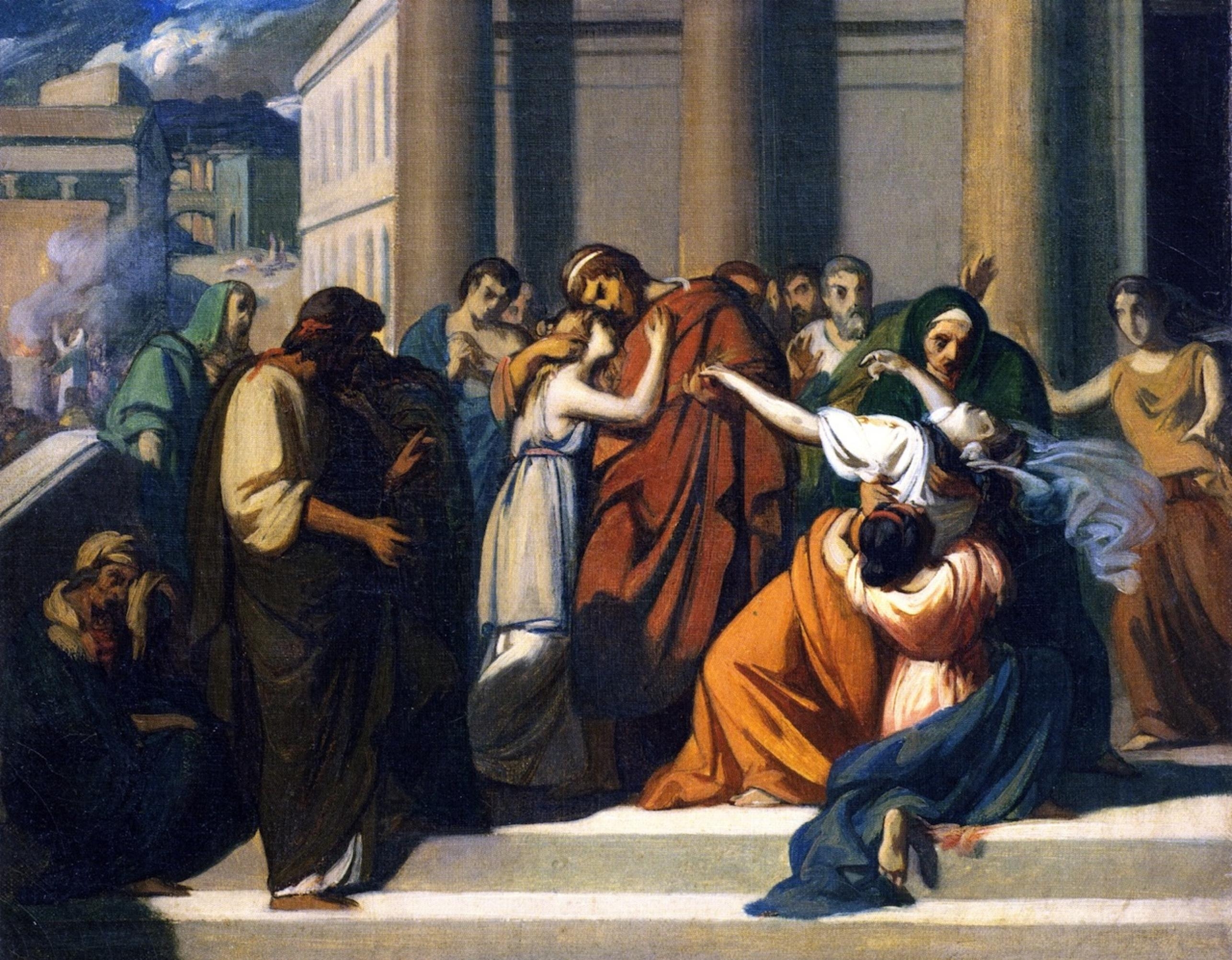|
Judy GeBauer
Judy GeBauer is an American playwright. Born in Long Beach, California, Long Beach, CA, she grew up in the Bay Area and spent several years abroad. Her love for acting and writing began early. By third grade, she had written several neighborhood plays and she was appearing in children's theatre productions, playing the Queen of Hearts, a spider, a clown, and a toy soldier. She moved with her family to Denmark during her junior high years and attended an international school and a private girls school in Copenhagen. With her mother and brother she traveled through Europe, the Middle East and Asia before returning to California. As an undergraduate at San Francisco State University, she appeared as Emilia (Othello), Emilia in Othello and Mary Warren (Salem witch trials), Mary Warren in The Crucible, among other roles. After graduation, she appeared as Octavia in Antony and Cleopatra at Marin Shakespeare Festival, in productions of Twelfth Night (Viola (Twelfth Night character), Viol ... [...More Info...] [...Related Items...] OR: [Wikipedia] [Google] [Baidu] |
Long Beach, California
Long Beach is a city in Los Angeles County, California. It is the 42nd-most populous city in the United States, with a population of 466,742 as of 2020. A charter city, Long Beach is the seventh-most populous city in California. Incorporated in 1897, Long Beach lies in Southern California in the southern part of Los Angeles County. Long Beach is approximately south of downtown Los Angeles, and is part of the Gateway Cities region. The Port of Long Beach is the second busiest container port in the United States and is among the world's largest shipping ports. The city is over an oilfield with minor wells both directly beneath the city as well as offshore. The city is known for its waterfront attractions, including the permanently docked and the Aquarium of the Pacific. Long Beach also hosts the Grand Prix of Long Beach, an IndyCar race and the Long Beach Pride Festival and Parade. California State University, Long Beach, one of the largest universities in California b ... [...More Info...] [...Related Items...] OR: [Wikipedia] [Google] [Baidu] |
The Crucible
''The Crucible'' is a 1953 play by American playwright Arthur Miller. It is a dramatized and partially fictionalized story of the Salem witch trials that took place in the Massachusetts Bay Colony during 1692–93. Miller wrote the play as an allegory for McCarthyism, when the United States government persecuted people accused of being communists. Miller was questioned by the House of Representatives' Committee on Un-American Activities in 1956 and convicted of contempt of Congress for refusing to identify others present at meetings he had attended. The play was first performed at the Martin Beck Theatre on Broadway on January 22, 1953, starring E. G. Marshall, Beatrice Straight and Madeleine Sherwood. Miller felt that this production was too stylized and cold, and the reviews for it were largely hostile (although ''The New York Times'' noted "a powerful play n adriving performance"). The production won the 1953 Tony Award for Best Play. A year later a new production suc ... [...More Info...] [...Related Items...] OR: [Wikipedia] [Google] [Baidu] |
Characters In Romeo And Juliet
William Shakespeare's play ''Romeo and Juliet'' contains a relatively distinctive cast of characters. In addition to the play's eponymous protagonists, Romeo Montague and Juliet Capulet, the play, which is set in Verona, Italy, contains roles for members of their respective families and households; Prince Escalus, the city's ruler, and his kinsman, Count Paris; and various unaffiliated characters such as Friar Laurence and the Chorus. In addition the play contains two ghost characters (Petruchio and Valentine) and an unseen character (Rosaline). House of Escalus Prince Escalus Prince Escalus, the Prince of Verona, is the desperate resolver of the feuding families. He is based on the actual Scaliger family which ruled Verona, possibly on Bartolomeo I. Escalus is the voice of authority in Verona. He appears only three times within the text and only to administer justice following major events in the feud between the Capulet and Montague families. He first punishes Capulet and Mo ... [...More Info...] [...Related Items...] OR: [Wikipedia] [Google] [Baidu] |
Olivia (Twelfth Night)
Olivia is a fictional character from William Shakespeare's play ''Twelfth Night'', believed to have been written around 1600 or 1601. She is at the centre of the various plots, both the comedic and the romantic. She has various suitors. Background Olivia is a beautiful lady of noble birth who lives in Illyria. Before the play begins, she lost her brother, her guardian, after her father died. This loss has made her grief-stricken and she has refused to see anyone who does not reside in her household and declared that she will be in mourning for seven years (The element itself, till seven years' heat, Shall not behold her face at ample view). Because of her wealth and beauty, Olivia attracts various men (Malvolio, Sir Andrew Aguecheek) who wish to marry her. The play begins with the Duke of Illyria, Orsino, pining away over his love for Olivia while she refuses to accept him as a suitor. Sir Andrew has been invited to her household by Sir Toby, and Andrew hopes to use h ... [...More Info...] [...Related Items...] OR: [Wikipedia] [Google] [Baidu] |
Much Ado About Nothing
''Much Ado About Nothing'' is a comedy by William Shakespeare thought to have been written in 1598 and 1599.See textual notes to ''Much Ado About Nothing'' in ''The Norton Shakespeare'' ( W. W. Norton & Company, 1997 ) p. 1387 The play was included in the ''First Folio'', published in 1623. The play is set in Messina and revolves around two romantic pairings that emerge when a group of soldiers arrive in the town. The first, between Claudio and Hero, is nearly altered by the accusations of the villain, Don John. The second romance, between Claudio's friend Benedick and Hero's cousin Beatrice, takes centre stage as the play goes on, with both characters' wit and banter providing much of the humour. Through "noting" (sounding like "nothing", and meaning gossip, rumour, overhearing), Benedick and Beatrice are tricked into confessing their love for each other, and Claudio is tricked into believing that Hero is not a maiden (virgin). The title's play on words references t ... [...More Info...] [...Related Items...] OR: [Wikipedia] [Google] [Baidu] |
Oedipus Rex
''Oedipus Rex'', also known by its Greek title, ''Oedipus Tyrannus'' ( grc, Οἰδίπους Τύραννος, ), or ''Oedipus the King'', is an Athenian tragedy by Sophocles that was first performed around 429 BC. Originally, to the ancient Greeks, the title was simply ''Oedipus'' (), as it is referred to by Aristotle in the ''Poetics''. It is thought to have been renamed ''Oedipus Tyrannus'' to distinguish it from ''Oedipus at Colonus'', a later play by Sophocles. In antiquity, the term "tyrant" referred to a ruler with no legitimate claim to rule, but it did not necessarily have a negative connotation. Of Sophocles' three Theban plays that have survived, and that deal with the story of Oedipus, ''Oedipus Rex'' was the second to be written, following ''Antigone'' by about a dozen years. However, in terms of the chronology of events described by the plays, it comes first, followed by ''Oedipus at Colonus'' and then ''Antigone''. Prior to the start of ''Oedipus Rex'', Oedipus ... [...More Info...] [...Related Items...] OR: [Wikipedia] [Google] [Baidu] |
Jocasta
In Greek mythology, Jocasta (), also rendered Iocaste ( grc, Ἰοκάστη ) and also known as Epicaste (; ), was a daughter of Menoeceus, a descendant of the Spartoi Echion, and queen consort of Thebes. She was the wife of first Laius, then of their son Oedipus, and both mother and grandmother of Antigone, Eteocles, Polynices and Ismene. She was also sister of Creon and mother-in-law of Haimon. Life After his abduction and rape of Chrysippus, Laius married Jocasta. Laius received an oracle from Delphi which told him that he must not have a child with his wife, or the child would kill him and marry her; in another version, recorded by Aeschylus, Laius is warned that he can only save the city if he dies childless. One night, Laius became drunk and fathered Oedipus with Jocasta. Jocasta handed the newborn infant over to Laius. Jocasta or Laius pierced and pinned the infant's ankles together. Laius instructed his chief shepherd, Menoetes (not to be confused with Menoetes ... [...More Info...] [...Related Items...] OR: [Wikipedia] [Google] [Baidu] |
She Stoops To Conquer
''She Stoops to Conquer'' is a comedy by Oliver Goldsmith, first performed in London in 1773. The play is a favourite for study by English literature and theatre classes in the English-speaking world. It is one of the few plays from the 18th century to have retained its appeal and is still regularly performed. The play has been adapted into a film several times, including in 1914 and 1923. Initially the play was titled ''Mistakes of a Night'' and the events within the play take place in one long night. In 1778, John O'Keeffe wrote a loose sequel, '' Tony Lumpkin in Town''. The play is notable for being the origin of the common English phrase, ''"Ask me no questions and I'll tell you no lies."'' (appearing as 'fibs' in the play). Plot Act I Act I begins at the Hardcastles’ home in the countryside. Mrs. Hardcastle complains to her husband that they never leave their rural home to see the new things happening in the city. Hardcastle says he loves everything old, including his ... [...More Info...] [...Related Items...] OR: [Wikipedia] [Google] [Baidu] |
A Midsummer Night's Dream
''A Midsummer Night's Dream'' is a comedy written by William Shakespeare 1595 or 1596. The play is set in Athens, and consists of several subplots that revolve around the marriage of Theseus and Hippolyta. One subplot involves a conflict among four Athenian lovers. Another follows a group of six amateur actors rehearsing the play which they are to perform before the wedding. Both groups find themselves in a forest inhabited by fairies who manipulate the humans and are engaged in their own domestic intrigue. The play is one of Shakespeare's most popular and is widely performed. Characters * Theseus—Duke of Athens * Hippolyta—Queen of the Amazons * Egeus—father of Hermia * Hermia—daughter of Egeus, in love with Lysander * Lysander—in love with Hermia * Demetrius—suitor to Hermia * Helena—in love with Demetrius * Philostrate—Master of the Revels * Peter Quince—a carpenter * Nick Bottom—a weaver * Francis Flute—a bellows-mender * Tom Snout—a tinker * ... [...More Info...] [...Related Items...] OR: [Wikipedia] [Google] [Baidu] |
Jane Shore
Elizabeth "Jane" Shore (née Lambert) (c. 1445 – c. 1527) was one of the many mistresses of King Edward IV of England. She became the best-known to history through being later accused of conspiracy by the future King Richard III, and compelled to do public penance. She was also a sometime mistress of other noblemen, including Edward's stepson, Thomas Grey, 1st Marquess of Dorset, and William Hastings, 1st Baron Hastings but ended her life in bourgeois respectability. Early life and first marriage Born in London in about 1445, Elizabeth Lambert was the daughter of a prosperous merchant, John Lambert (d.1487), and his wife Amy (d.1488), who was the daughter of a well-off grocer named Robert Marshall. The name "Jane", which has sometimes been attached to her, was the invention of a 17th-century playwright (Heywood), because during the course of the sixteenth century, her real first name was omitted, then forgotten by authors. The tradition must go further back, however, as on 2 ... [...More Info...] [...Related Items...] OR: [Wikipedia] [Google] [Baidu] |
Richard III (play)
''Richard III'' is a play by William Shakespeare. It was probably written c. 1592–1594. It is labelled a history in the First Folio, and is usually considered one, but it is sometimes called a tragedy, as in the quarto edition. ''Richard III'' concludes Shakespeare's first tetralogy (also containing ''Henry VI, Part 1'', ''Henry VI, Part 2'', and ''Henry VI, Part 3'') and depicts the Machiavellian rise to power and subsequent short reign of King Richard III of England. It is the second longest play in the Shakespearean canon and is the longest of the First Folio, whose version of ''Hamlet'', otherwise the longest, is shorter than its quarto counterpart. The play is often abridged for brevity, and peripheral characters removed. In such cases, extra lines are often invented or added from elsewhere to establish the nature of the characters' relationships. A further reason for abridgment is that Shakespeare assumed his audiences' familiarity with his ''Henry VI'' plays, frequentl ... [...More Info...] [...Related Items...] OR: [Wikipedia] [Google] [Baidu] |
King Lear
''King Lear'' is a tragedy written by William Shakespeare. It is based on the mythological Leir of Britain. King Lear, in preparation for his old age, divides his power and land between two of his daughters. He becomes destitute and insane and a proscribed crux of political machinations. The first known performance of any version of Shakespeare's play was on Saint Stephen's Day in 1606. The three extant publications from which modern editors derive their texts are the 1608 quarto (Q1) and the 1619 quarto (Q2, unofficial and based on Q1) and the 1623 First Folio. The quarto versions differ significantly from the folio version. The play was often revised after the English Restoration for audiences who disliked its dark and depressing tone, but since the 19th century Shakespeare's original play has been regarded as one of his supreme achievements. Both the title role and the supporting roles have been coveted by accomplished actors, and the play has been widely adapted. In his ' ... [...More Info...] [...Related Items...] OR: [Wikipedia] [Google] [Baidu] |








